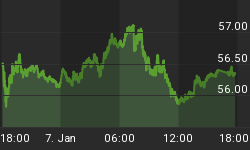Here are some of the issues from the big picture that will influence bond prices going forward:
1. Inflation might be relatively high relative to present yields, but should be under pressure going forward. We have the world's largest carmaker, retailer and airline all tripping over each other cutting prices in no subtle fashion. An NYSE seat just sold for a record low $1million. The bond market does not trade on historic inflation (which happens to be a lagging indicator), but on anticipated inflation.
2. All the experts keep talking about Central Bank purchases supporting the US bond market and the BOJ keeping Treasury bond yields artificially low. Gimme a break!!! Anyone who has done their homework knows that the BOJ - the largest Treasury note purchaser by a country mile - has not bought a single bond that is over 2 years in maturity over the past year. The Fed controls short term interest rates, the bulk of CB purchases is in short term paper, and they choose to be price takers not price setters. There is no Treasury bond issuance with maturities over 10 years, there is about $100-120 billion in annual supply with maturity over 5 years (in form of 10 year notes). That is a drop in the bucket. If the BOJ decided to get involved with that part of the curve, they could scoop up that entire supply in one or two trades if they were so inclined. Give your head a shake, CBs are not controlling 10 year Treasury yields, contrary to popular belief.
3. The yield curve as measured by 10 year yield - 2 year yield is around 110 basis points. The average over the past 25 years is 83. The curve was record steep 15 months ago (275 bps), but it is still steeper than average. Although there has been considerable flattening, and we might have a pause in this trend, the curve flattening trend is far from finished. It is for the experts to decide how far it can go... Did anyone say "inversion"?
NOTEWORTHY: The economic data was mixed again last week. The biggie, the employment report in the US came in slightly below consensus, as per our expectations. The labour data in Canada on the other hand was surprisingly strong and not sustainable in our opinion. While it will be a busy week for economic data this week, the items of most interest to us will be Jobless Claims on Thursday and the Trade Balance on Wednesday. Claims over 350k again might just raise some alarm bells on the labour front, while a lower than expected Trade Deficit might add some fuel to the dollar bounce. In addition, it will be interesting to see how the bond market deals with the 5-year note auction on Wednesday and the 10-year TIPS auction on Thursday.
INFLUENCES: Fixed income portfolio managers were back to record bearish last week (RT survey steady at 38% bullish, down 3 points to the lowest level in 15 years). I need to see this number closer to 50% to turn negative on bonds. While specs are long a neutral +32k T-note contracts, it is worth noting again that the "smart money" commercials are long 138k contracts, which is a definite positive. Bonds are trading sideways and the longer-term chart remains constructive. Seasonals are negative for the next week or so. Bond market seasonals are most negative all year from mid January through early May.
RATES: US Long Bond futures closed at 112-03, down close to a half point on the week, while the yield on the US 10 year bond rose 6 basis points to 4.27%. . The Canada - US 10 year spread was slightly wider moving out 2 to 9 basis points. Buying Canadian 10 year bonds to sell US 10 year notes and pick up 50 basis points was recommended in late September and taking profits was first recommended 2 weeks ago when the spread was trading in single digits. While the bulk of this move has already transpired, I still believe Canadian bonds are on the cheap side relative to the US 10 year bonds. The front end in the US outperformed Canada last week. Dec05 BA futures closed the week 44 basis points through Dec05 EuroDollar futures, which was 5 basis points narrower than last week's close. It makes sense to sell BAZ5 to buy EDZ5 north of 40. The belly of the Canadian curve was stable to the wings last week, but the belly is still cheap. With the start of the New Year, I am going to look at new issues for my barbell proxy on the Canada curve, moving out from December 05 to December 06 on the short end and the 2011 maturity to the 2012 maturity on the issue representing the belly of the curve. Selling Canada 3.25% 12/2006 and Canada 5.75% 6/2033 to buy Canada 5.25% 6/2012 was unchanged at a pick-up of 49 basis points. As the curve continues to flatten, the belly should continue to outperform. Assuming an unchanged curve, considering a 3-month time horizon, the total return for the Canada bond maturing in 2012 is the best value on the curve.
CORPORATES: Corporate bond spreads were stable last week. The buy side is way long this sector. Long TransCanada Pipeline bonds were unchanged at 110, while long Ontario bonds were at 45.0. A starter short in TRAPs was recommended at 102 back in February. Credit spreads are excessively tight and it looks like the supply pipeline is going to be fairly heavy going forward.
BOTTOM LINE: I remain positive on bonds. The front end is cheap in the US. An overweight position in the belly of the curve is still recommended. Short exposure for the corporate sector was advised since February 2004. Long Canada - Short US 10 year position was established at +50. Cover it on strength to even yield.
















